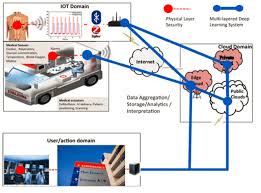vBBU (Virtual Baseband Unit): The Future of Telecom Network Infrastructure
telcomatraining.com – The telecommunications industry is evolving rapidly, driven by the need for higher efficiency, scalability, and cost-effectiveness. One of the most groundbreaking advancements in telecom infrastructure is the Virtual Baseband Unit (vBBU). This technology is transforming traditional network architecture by virtualizing baseband processing, enabling operators to enhance network performance and reduce operational costs. In this article, we will explore what vBBU is, its benefits, and its role in the future of telecom networks.
Understanding vBBU
A Virtual Baseband Unit (vBBU) is a software-defined baseband processing unit that replaces traditional hardware-based baseband units (BBUs) used in telecom networks. Traditionally, a BBU is responsible for handling radio signal processing, network coordination, and connectivity functions in cellular networks. By virtualizing this function, vBBU enables these processes to be handled via software on commercial off-the-shelf (COTS) hardware, reducing dependency on specialized equipment.
The vBBU concept is a key component of Cloud Radio Access Network (C-RAN) architecture, where baseband processing is centralized in a cloud-based environment. This allows telecom operators to manage their networks more efficiently and flexibly.
Key Benefits of vBBU
1. Cost Reduction
One of the most significant advantages of vBBU is the potential for cost savings. Traditional BBU infrastructure requires specialized hardware, which is expensive to deploy and maintain. Virtualizing baseband processing reduces capital expenditure (CAPEX) by eliminating the need for proprietary hardware and lowering operational expenditure (OPEX) by simplifying network management.
2. Scalability and Flexibility
vBBU enables network operators to scale their infrastructure dynamically based on demand. Since baseband processing is virtualized, network capacity can be adjusted in real-time, ensuring efficient resource utilization. This is particularly beneficial in handling varying traffic loads, such as during peak hours or in areas with fluctuating user density.
3. Enhanced Network Performance
With centralized baseband processing, vBBU improves coordination between network elements, leading to better resource allocation, reduced latency, and improved overall network efficiency. This is crucial for supporting next-generation technologies like 5G and beyond, where low latency and high reliability are essential.
4. Energy Efficiency
By consolidating baseband processing functions, vBBU reduces power consumption compared to traditional hardware-based BBUs. Energy efficiency is a major concern for telecom operators, and adopting vBBU can significantly lower energy costs and contribute to a more sustainable telecom infrastructure.
5. Seamless Network Upgrades
Software-defined networking (SDN) capabilities in vBBU allow for easier upgrades and maintenance. Operators can deploy new features, security patches, and performance enhancements remotely without requiring physical hardware replacements, ensuring a more agile and future-proof network.
vBBU in 5G and Beyond
As the telecom industry transitions to 5G networks, the role of vBBU becomes even more critical. 5G demands ultra-low latency, massive device connectivity, and high-speed data transmission, all of which can be efficiently managed using vBBU technology. Additionally, Network Function Virtualization (NFV) and Software-Defined Networking (SDN) work in conjunction with vBBU to create a highly programmable and responsive network environment.
Moreover, with the emergence of 6G and beyond, vBBU will continue to play a vital role in enabling AI-driven automation, edge computing, and advanced analytics, paving the way for even more efficient telecom networks.
Challenges and Considerations
Despite its numerous advantages, implementing vBBU also presents some challenges:
- Initial Deployment Complexity: Transitioning from traditional BBUs to vBBU requires significant planning and investment in cloud infrastructure.
- Security Concerns: Virtualization increases the risk of cyber threats, requiring robust security measures to protect network integrity.
- Interoperability Issues: Ensuring compatibility between virtualized and legacy systems can be complex and requires industry-wide standardization efforts.
Conclusion
vBBU is undoubtedly a game-changer in telecom network infrastructure. Its ability to reduce costs, improve scalability, and enhance performance makes it an essential component of modern and future telecom networks. As 5G and emerging technologies continue to evolve, the adoption of vBBU will play a crucial role in shaping a more efficient, flexible, and sustainable telecommunications ecosystem.
Telecom operators and industry stakeholders must embrace vBBU to stay ahead in the rapidly changing digital landscape. By leveraging its benefits and addressing the associated challenges, the future of telecom infrastructure can be transformed into a more agile and resilient network environment.







